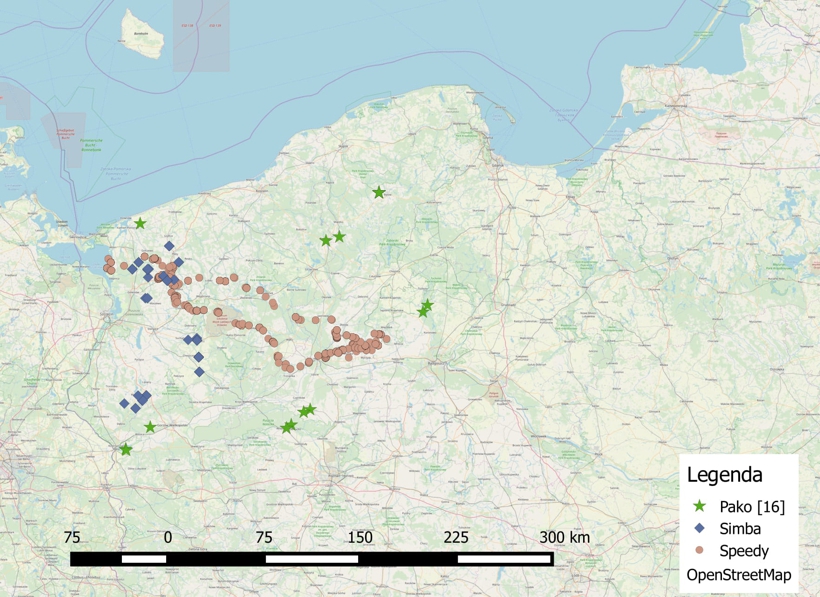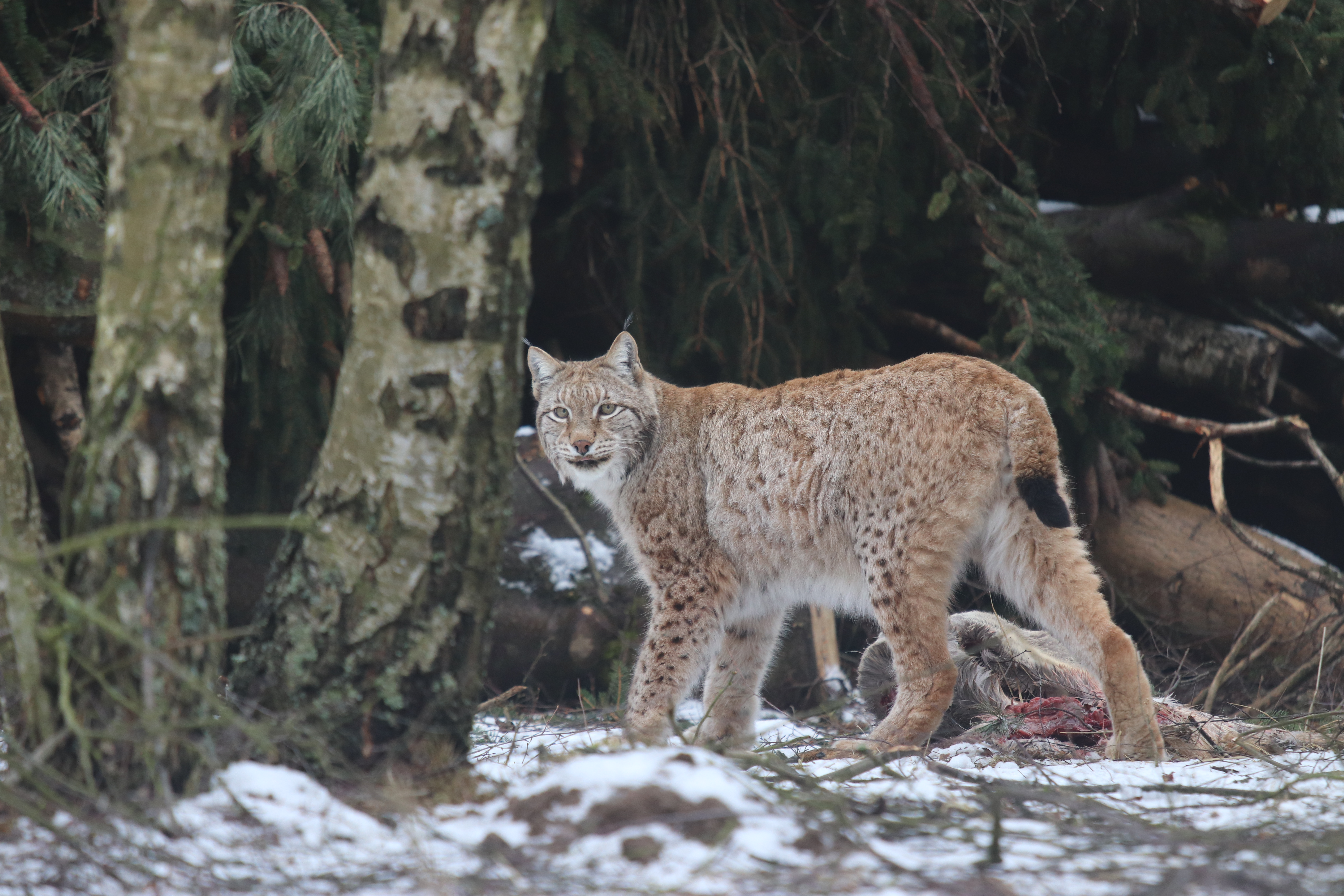Over the past few months we have had the opportunity to observe interesting migrations of reintroduced lynxes almost throughout western Poland (literally!). All individuals were released from three points, and more specifically - special adaptation pens in the forest. The homesteads were located in the Drawsko, Mirosławiec Forest Districts and the Iński Lake District.
Young wild lynxes begin period of dispersion, after achieving full independence (about 1 year) - they leave from the mother to finde their own territory. Based of numerous studies, it was indicated that females are not very willing to go on long migrations and most often occupy the territory close to "family nest", near their mothers. The males beeing more "rebel"- they show trend to long wandering distanse. A wild record holder, recorded in Norway, traveled about 450 km (in a straight line) during the dispersion. Of course, it is necessary to take into numerous factors that affect the period of young spread, such as the density of buildings or the availability of food (or its effectiveness in obtaining it yourself).
Lynxes in Project that were released, came from breeding centers and born in captivity. Although they usually had good living conditions, their human owners were not able to ensure their full development of natural instincts. The project we are running is just the first project of this type that we plan to continue in the future. The amount of data collected over the course of the 3 years of the Project suggests that lynxes born in captivity did not lose their natural instincts. And so we observe how our "lynxes" roam Poland from the north (almost on the Baltic Sea) all the way to the Kampinowska Forest looking for new territories, and maybe for oestrus females? (the Marching period is beginning slowly). Below are the lynxes that migrated furthest from the place of release in the province. West Pomeranian (Łopuch, Speedy, Simba and Pako). The average length of their route is about 400 km!
At the last moment: an adult male Łopuch crossed to the other bank of the Vistula! We keep our fingers crossed for him! May he greet our friends from Białowieża
1. Data from 3 lynx - GPS points from the last 5 months up to now.

2. Lynx Łopuch wandering through the Poland, data from GPS collar telemtry, from 5 months up to now.



